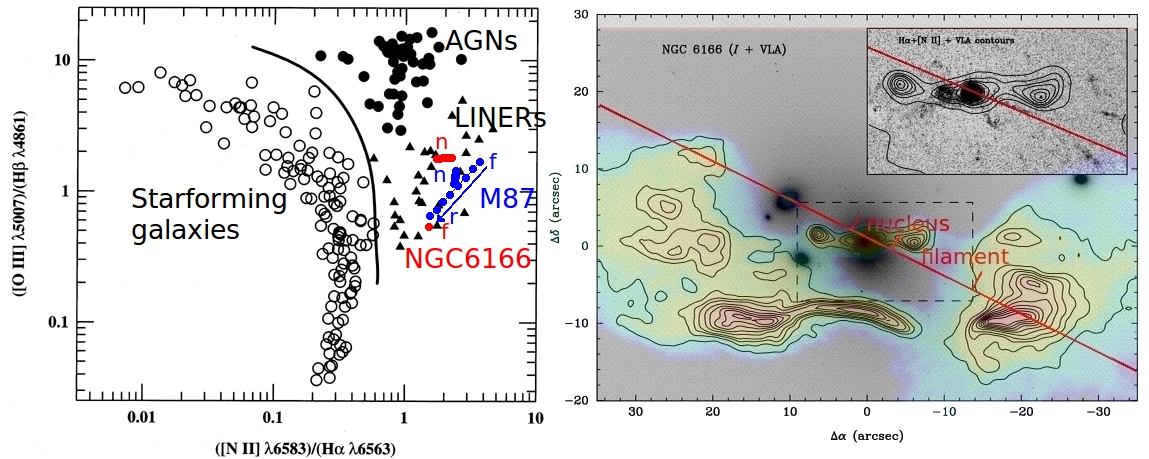Daily Image
15-08-2012Summerstudent project: Gas Properties of M87 and NGC 6166.
| Submitter: | Janez Kos |
| Description: | My main project during the ASTRON/JIVE summerschool was to study properties of optical line emitting gas in brightest cluster galaxies. This gas is very luminous and warm (temperature is around 10 000 K) and impossible to explain without introducing a reheating mechanism. This reheating mechanism is not well understood. I studied emission lines in the optical part of the spectrum. Different line ratios are good tracers of physical properties like temperature, density, metallicity and ionization parameter. I studied the galaxies M87 and NGC 6166, which are members of the LINER (low ionization nuclear emission-line region) class of galaxies. Longslit spectra were taken with the ISIS spectrograph on the William Herschel telescope. Both galaxies show peculiar ratios of ionized Nitrogen over H-alpha and ionized Sulfur over H-alpha. This presents the hardest problem when explaining the line ratios with different heating models. AGNs and hot stars are well known to be ruled out as a heating source, so we compared predictions from shockwave models with the observed line ratios. None of the shockwave models were able to explain the observations and as such we ruled these models out as well. Our observations put additional constraints on the unknown ionization spectrum, in particular at large distances from the nuclei of these galaxies, and we aim to model this in more detail in the future. I really enjoyed being part of the ASTRON summerschool and I would like to thank all the ASTRON/JIVE people and fellow summer students who made my summer here really awesome and specially my mentor Raymond Oonk who was a pleasure to work with. Image: left: BPT diagram with nucleus and filament of M87 (blue dots) and NGC 6166 (red dots). Open black circles represent starforming galaxies and filled black are AGN. Triangles represent other LINER class galaxies. right: Slit position for NGC 6166 (red line) shown on top of a combination of visible (grey-scale) and radio (black contours) light associated with this galaxy. |
| Copyright: | J. Kos |
| Tweet |  |
